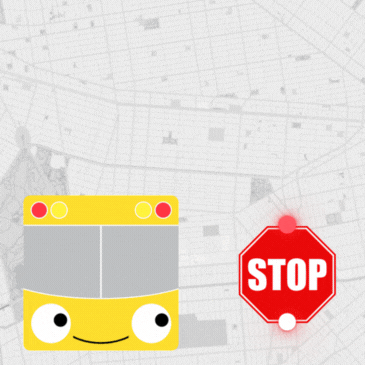1. In the beginning of the second Torah portion which we read this week (Parshas Masei) the Torah tells us about all the journeys which the Jewish people traveled from the time they left Egypt until they finally entered in to the Land of Israel[1].
Rashi [2] tells us that there were 42 journeys in all [3].
2. The Rebbe shows us the Chassidic insight regarding these journeys:
The Weekly Sedra – Parshas Mattos-Masei
The Rebbe says:
1. In the beginning of the second Torah portion which we read this week (Parshas Masei) the Torah tells us about all the journeys which the Jewish people traveled from the time they left Egypt until they finally entered in to the Land of Israel[1].
Rashi [2] tells us that there were 42 journeys in all [3].
2. The Rebbe shows us the Chassidic insight regarding these journeys:
The Bal Shem Tov [4] explains that these 42 journeys which the Jewish people traveled long ago signify the stages which every Jew goes through in their own life; our exodus from Egypt signifies a Jewish person’s birth, entering the Land of Israel signifies a Jewish person’s ascent from this world, and all the journeys in between signify the different periods in a Jew’s life.
3. The Rebbe questions this:
Question: The Torah tells us that some journeys were not in accordance with Hashem’s [5] will, for example when they sinned with the golden calf [6] or when they complained that they had no meat [7]. If so, how could the Bal Shem Tov tell us that every one of the journeys is a stage in our lives? This obviously does not mean that we should sin as a part of our journey (Heaven Forbid), so how can we explain this?
4. The Rebbe answers his question according to the explanation of the Bal Shem Tov:
The Bal Shem Tov explains that all of the journeys themselves were holy, but Jewish people have free choice and they chose to use certain journeys in the wrong way.
To help us understand this concept let us take as an example the journey in which the Jewish people complained that they had no meat: After this incident took place Hashem named that place “Kivrot Ha’tie’vah – The graves of desire”. Simply this means that since some of the Jewish people were buried there because they desired the meat (for no good reason- they had the Manna and plenty of livestock, they just wanted to antagonize Hashem), Hashem named the place “Kivrot Ha’tie’vah – The graves of desire”. However this is only because the Jewish people chose to use the energy of that place for sin.
The truth is that they could have channeled the energy of that place into a good thing and then the name of that place “Kivrot Ha’tie’vah – The graves of desire” would have meant something else. If they would have served Hashem in that place they would have reached a level at which there is no possibility of desire or indulgence for the enjoyments of this world, and thus “Kivrot Ha’tie’vah – The graves of desire” would have meant that at this place the Jewish people buried their desires for anything opposite of Hashem’s will.
5. The Rebbe now applies this logic to the journeys which every Jew takes throughout his life:
Every situation that Hashem puts us in throughout our life has the possibility of being used for the good or (Heaven Forbid) for the bad, the decision is ours. And we should know that no matter what we chose to do with our previous journeys we can always choose life at this junction in our life and not only will this present journey be used for good but “through repentance previous sins are turned into merits”.
6. The Rebbe now connects this with “the 3 weeks” [8] which we are now in:
The events which lead to “the 3 weeks” must be connected to the conduct of the Jewish people at that time. Again- they were put into a situation by Hashem and they could have used the special energy to have an amazing ascent, but instead they chose to have a horrible descent. However we have the power to turn these 3 weeks of mourning into the 3 weeks of amazing joy[9] (as we said earlier “through repentance previous sins are turned into merits”)!
Translated by Rabbi Shalom Goldberg. Taken from Likutei Sichos Volume 4.
——————————————————————————–
[1] See Chapter 33, Verses 1 through 56.
[2] An acronym for Reb Shlomo Yitzchaki, one of the major commentaries on the Torah.
[3] See Rashi on Verse 1, Chapter 33.
[4] Reb Yisroel Bal Shem Tov, the founder of the Chassidic movement
[5] Or “G-d’s”.
[6] See Exodus, Chapter 32, Verses 1 through 35.
[7] See Numbers, Chapter 11, Verses 1 through 35.
[8] The “3 weeks” is a time of mourning. It begins on the 17th day of the Hebrew month of Tamuz and ends on the 9th day of the month of Av. It begins on the 17th day of Tamuz because that is the day when Moses broke the first set of Tablets which Hashem had given him to give to the Jewish people, it is also the day when the walls of Jerusalem were breached by the Roman army and the services of the Holy Temple were stopped. It ends with the 9th day of Av because on this day both of our Holy Temples were destroyed. For more information on “the 3 weeks” visit http://www.chabad.org/calendar/view/day.asp?tdate=7/3/2007.
[9] See Rambam, at the very end of Hilchos Tanis.













